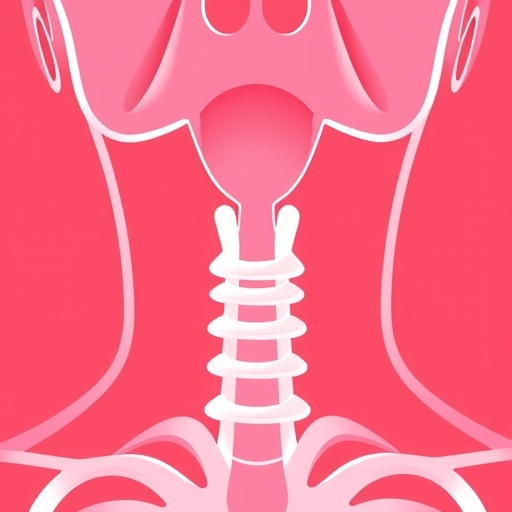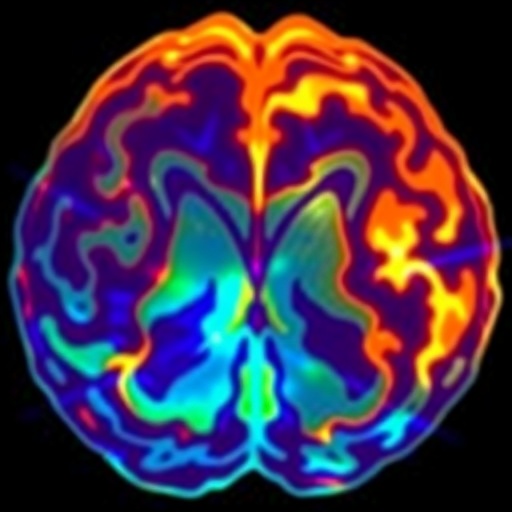In recent years, papillary thyroid carcinoma (PTC), the most common form of thyroid cancer, has witnessed a rapid rise in incidence worldwide. With advancements in medical technology, thermal ablation has surfaced as a promising minimally invasive alternative to traditional surgical interventions for PTC. However, while thermal ablation modalities such as radiofrequency ablation (RFA) and microwave ablation (MWA) are gaining traction for their precision and reduced recovery times, emerging clinical observations have raised important concerns regarding potential thyroid dysfunctions post-treatment. A new retrospective multicentre observational study published in BMC Cancer sheds light on the unsettling occurrence of hyperthyroidism following thermal ablation in PTC patients, providing crucial insights that challenge clinicians and researchers to revisit the safety profile of these procedures.
This comprehensive study meticulously analyzed 22 PTC patients across four hospitals who underwent thermal ablation therapies and subsequently developed hyperthyroidism during follow-up. Notably, before treatment, these patients exhibited normal thyroid function without any clinical manifestations associated with hyperthyroidism. The onset of hyperthyroidism after a seemingly successful ablation procedure poses a complex clinical puzzle. The investigation delved into patients’ diagnostic data, treatment specifics, and longitudinal follow-up records to identify underlying factors and evolve strategies to prevent and manage this adverse outcome effectively.
The patient cohort was predominantly female, with 19 females and only 3 males, averaging 36 years of age. This gender distribution aligns with the epidemiological characteristics of PTC, which predominantly affects women. The thermal ablation techniques applied included 13 cases of radiofrequency ablation and 9 cases of microwave ablation, both designed to destroy cancerous thyroid tissue through localized heat application. Crucially, none of these patients showed thyroid function abnormalities within the first week post-procedure, underscoring the latent and delayed nature of post-ablation hyperthyroidism.
Hyperthyroidism in these cases was characterized biochemically by suppressed thyroid-stimulating hormone (TSH) levels in conjunction with elevated free triiodothyronine (FT3) and/or free thyroxine (FT4). Clinically, several patients exhibited hallmark symptoms including heat intolerance, excessive sweating, hand tremors, and palpitations, collectively painting a picture of systemic overactivation of thyroid hormone pathways. These findings point to a spectrum of thyroid hyperactivity triggered after thermal injury to the gland but without immediate functional impairment, indicating an inflammatory or autoimmune-mediated process that unfolds over time.
One of the pivotal conclusions from this study is the identification of pre-existing thyroiditis or autoimmune thyroid diseases as possible predictors for development of hyperthyroidism after thermal ablation. This suggests that immune system dysregulation and inflammatory milieu in the thyroid gland may predispose patients to aberrant thyroid hormone release when subjected to thermal injury. The mechanical destruction caused by ablation could potentially exacerbate antibody-mediated processes or trigger novel autoimmune responses, invoking a heightened risk for hyperthyroid states.
From a mechanistic standpoint, thermal ablation induces coagulative necrosis of targeted tissue, effectively ablating malignancies while sparing surrounding structures. However, this heat-induced necrosis may incite a surge of inflammatory cytokines and thyroid antigens into the circulation, potentially provoking immune activation and dysregulation. This immunological response could explain the delayed onset of hyperthyroidism documented in the study. Such findings underscore the necessity to revisit patient selection criteria and pre-procedural screening for autoimmune conditions to mitigate post-ablation thyroid dysfunction risks.
Thermal ablation’s rising popularity in thyroid oncology is largely attributable to its minimally invasive profile, reduced procedural morbidity, and promising oncological outcomes. Nonetheless, these new data advocate for a re-evaluation of post-ablation monitoring protocols. Rather than limiting surveillance to imaging and cancer markers, routine thyroid function tests and close symptom assessment should be integral to follow-up regimens. Early detection of hyperthyroidism would enable timely medical intervention, reducing cardiovascular risks and improving overall patient quality of life.
Beyond clinical management, the study opens avenues for future research to delineate the precise immunopathogenesis linking thermal ablation with hyperthyroid outcomes. Investigations focused on autoimmune antibody profiles, cytokine release patterns, and genetic susceptibility factors could yield targeted prophylactic strategies. Moreover, comparative analyses between radiofrequency and microwave ablation modalities might reveal differential impacts on thyroid immune microenvironment, further refining treatment personalization.
The retrospective nature of the research offers real-world insights yet also signifies inherent limitations such as sample size constraints and potential selection biases. Large-scale prospective studies are warranted to validate these findings and establish standardized guidelines. Meanwhile, this work serves as a critical cautionary narrative for clinicians to balance the undeniable benefits of thermal ablation against emerging endocrine risks.
As thyroid cancer incidence continues to climb globally, optimizing treatment paradigms to safeguard both oncologic control and endocrine homeostasis remains imperative. The intersection of interventional radiology and endocrinology encapsulated in this study highlights the multidisciplinary challenges and innovations defining modern thyroid cancer care. With vigilant patient evaluation and adaptive clinical pathways, thermal ablation can still stand as a cornerstone treatment modality while mitigating unintended complications like hyperthyroidism.
In sum, the groundbreaking research published in BMC Cancer reveals a hidden dimension of risk associated with thermal ablation for papillary thyroid carcinoma. It stresses that patients exhibiting signs of thyroiditis or harboring autoimmune thyroid conditions before ablation warrant heightened scrutiny and personalized treatment plans to preempt hazardous thyroid hormone imbalances. As medical science advances, such revelations are vital to ensure emerging therapies deliver on their promises without compromising patient safety.
The novel observations about post-ablation hyperthyroidism incidentally invite a rethinking of thyroid cancer survivorship care. Endocrinologists and oncologists must collaborate closely to establish holistic frameworks encompassing cancer remission and endocrine equilibrium. This study’s findings could catalyze paradigm shifts in clinical practice guidelines, empowering practitioners with evidence-based tools to predict, detect, and manage thyroid dysfunction effectively.
Cutting-edge thermal ablation techniques continue to evolve rapidly, and integrating immunological insights will be key to harnessing their full therapeutic potential. Interdisciplinary research endeavors inspired by this study may ultimately yield innovative protocols minimizing autoimmune sequelae while maximizing tumor eradication. By anticipating and addressing complications such as hyperthyroidism, thyroid cancer care can achieve new frontiers in precision medicine—improving survival and life quality for millions affected globally.
In conclusion, while thermal ablation offers a beacon of hope for PTC treatment, this study illuminating hyperthyroidism occurrence post-treatment calls for balanced clinical prudence. Comprehensive pre-treatment assessments, vigilant post-procedure monitoring, and adaptive management strategies form the triad to safely unlock the promise of thermal ablation. Continued research and clinical awareness catalyzed by such findings will be critical to transforming thyroid oncology landscapes for years to come.
Subject of Research: Hyperthyroidism occurrence after thermal ablation treatment in patients with papillary thyroid carcinoma.
Article Title: The occurrence of hyperthyroidism after thermal ablation for thyroid papillary carcinoma: a retrospective multicentre observational study.
Article References:
Xie, R., Tang, X., Lin, T. et al. The occurrence of hyperthyroidism after thermal ablation for thyroid papillary carcinoma: a retrospective multicentre observational study. BMC Cancer 25, 1587 (2025). https://doi.org/10.1186/s12885-025-15026-7
Image Credits: Scienmag.com
DOI: https://doi.org/10.1186/s12885-025-15026-7
Tags: clinical observations in thyroid cancer treatmentcomplications of thermal ablationhyperthyroidism after thyroid cancer treatmentmanaging hyperthyroidism in cancer patientsmicrowave ablation thyroid dysfunctionminimally invasive thyroid cancer therapiesradiofrequency ablation side effectsretrospective study on thyroid ablationsafety profile of thermal ablationthermal ablation for papillary thyroid carcinomathyroid cancer incidence trendsthyroid function post ablation





